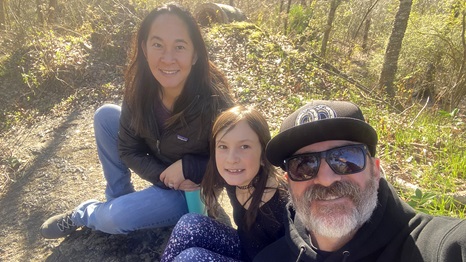people and community
barrow island operations hatches plan to protect turtles
2 min read | may 02, 2023
Julian Kalau (in yellow), a Chevron Australia environmental advisor, helps affix a satellite tracker on a flatback sea turtle.
“I was sitting on the beach, waiting for a turtle to nest, when two little brushtail possums walked up to me,” said Julian, an environmental advisor for Chevron Australia. “One put its paws on my leg, looked at me, then wandered off.”
Just like the possums, Julian is one of the curious creatures combing the coastline of Barrow Island. Located approximately 60 kilometers off the northwest coast of Western Australia, the island is one of the most important wildlife refuges in the world.
As the primary operator on the island, Chevron is working to help protect the environment and preserve the area’s rich biodiversity. This includes the flatback sea turtle, the subject of Julian’s shoreline surveillance at the threshold of a new year.
nesting haven
Named for the shape of their shell, flatbacks are among the 44 reptile species you might find on Barrow Island, especially during nesting season from December through January.
It’s an incredible sight to watch the turtles congregate on the sandy shores to lay clutches of eggs, just as it’s rewarding to protect them through long-term planning, said Julian.

A flatback sea turtle returns to the ocean after nesting on an Australian island.
As well as supporting flatback research and monitoring of regional populations onshore, we carefully avoid disturbing the species onshore by:
- Using lower-intensity and orange-tinged outdoor lights on our natural gas facility. White lights can deter nesting and disorient hatchlings as they make their first journey to the ocean.
- Limiting human activity on beaches.

An identification tag can be seen on the flipper of this flatback turtle.
turtle quest
Flatbacks are the only species of sea turtle listed as “data deficient” by the International Union for Conservation of Nature, meaning we don’t know much about them. Extensive research is needed to help protect the species from threats like fishing and pollution and establish an effective conservation plan.
With the support of a leading marine conservation consultancy, more than 7,500 adult female flatbacks have been tagged with either titanium flipper tags or electronic shoulder chips.
“When we started researching, we really didn’t know that much about flatbacks,” Julian said. “We now know more about their activities, where they travel and how nesting females behave.”
rare and remarkable creatures
Barrow Island hosts many mammal species that are now absent or rarely seen across other parts of Australia. This includes a small marsupial called the Barrow Island boodie and the black-flanked rock-wallaby.
It’s home to a range of marsupials, including wallabies, bandicoots and possums, and native rats, mice and microbats. The marine environment features a rich community of coral, seagrass, macroalgae and other organisms that live on the sea floor.
To Julian, getting up close and personal with the island’s many residents is part of his job as well as a perk. For instance, there was the time a female hawksbill sea turtle shambled over the sands to nest next to his foot.
“I couldn’t move because if I did, I would disturb her,” he said. “So, I just waited there patiently for 40 minutes until she left. It was really quite amazing.”
topics covered
related content
-
 renewable fuels VP takes on challenge of lifetime
renewable fuels VP takes on challenge of lifetimepeople and communitymay 03, 2024
-
 the chevron championship drives opportunity for women
the chevron championship drives opportunity for womenpeople and communityapril 24, 2024
-
 helping the earth is a team sport
helping the earth is a team sportpeople and communityapril 22, 2024
-
 sharing data is benefiting emission reduction efforts
sharing data is benefiting emission reduction effortsemissions solutionsapril 04, 2024
chevron email updates
Subscribe to our newsletter to receive news and updates.



